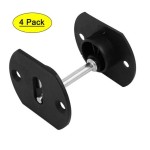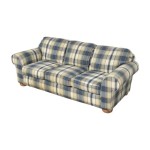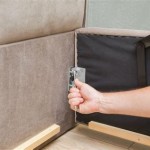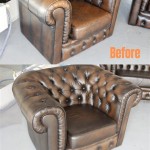How to Repair Sagging Leather Sofa
A sagging leather sofa can be a frustrating problem. It can make your favorite seating uncomfortable and detract from the overall aesthetic of your living room. Thankfully, repairing a sagging leather sofa is often a manageable DIY project. By understanding the common causes of sagging and following these steps, you can restore your sofa to its former glory.
Identify the Cause of the Sag
Before embarking on any repairs, it is essential to determine the source of the sagging. This will help you choose the most effective solution. There are several common reasons why a leather sofa might sag:
- Worn-out springs: Over time, the springs in your sofa's cushions can lose their elasticity, causing the fabric to sag.
- Loose or broken suspension straps: These straps support the weight of the cushions and can stretch or break over time.
- Thinning or damaged padding: The padding beneath the leather upholstery can flatten or become damaged, resulting in a sag.
- Poor construction: Some sofas are simply built with inferior materials, leading to premature sagging.
By examining the sofa carefully, you can identify the specific problem and proceed with the appropriate repair technique.
Repairing Sagging Springs
If the sagging is caused by worn-out springs, you can either replace them or tighten them. Replacing the springs involves disassembling the cushion and installing new ones. This can be a complex task, particularly if you have a multi-layered sofa. If you're not comfortable with this level of disassembly, you can try tightening the existing springs. This involves finding the spring clips and adjusting them to increase tension.
Here are some additional steps to consider:
- Check for broken springs. If you find a broken spring, you'll need to replace it. This will likely require removing the cushion and accessing the spring system.
- Use a spring compressor. To tighten the springs, you'll need a spring compressor. This tool helps to compress the springs and allow you to adjust the clips.
- Re-assemble the cushion. Once the springs are tightened, carefully re-assemble the cushion and test its resilience.
While tightening springs can be a temporary fix, replacing them offers a more long-lasting solution.
Repairing Loose or Broken Suspension Straps
If the sagging is due to loose or broken suspension straps, you can tighten or replace them. To tighten the straps, simply adjust the buckles or knots that secure them to the sofa frame. For broken straps, you will need to detach the cushion and replace the strap using a sturdy material like webbing.
Follow these steps for replacing suspension straps:
- Remove the cushion. This will give you access to the straps.
- Cut new straps. Use a heavy-duty webbing material and cut two new straps slightly longer than the originals.
- Attach new straps. Secure one end of each strap to the sofa frame using a strong knot or a metal clip.
- Attach to the cushion. Attach the other end of each strap to the underside of the cushion in a similar manner.
- Tighten straps. Adjust the tension of the straps to achieve the desired firmness.
Replacing suspension straps is a relatively straightforward process, and it can significantly improve the support of your sofa.
Repairing Thinning or Damaged Padding
If the sagging is due to thinning or damaged padding, you can add additional padding or replace the existing padding. Adding padding involves inserting a layer of new foam or fiberfill beneath the existing padding. Replacing the padding requires removing the upholstery and installing new padding material.
Here's how to add padding to your sofa:
- Remove the cushion cover. This will expose the padding.
- Measure the cushion. Determine the size and thickness of the new padding you need.
- Cut new padding. Using a sharp knife, cut the new padding to the required size and shape.
- Place the new padding. Position the new padding beneath the existing padding.
- Re-attach the cover. Securely re-attach the cushion cover.
Adding padding is a relatively simple and affordable way to address sagging caused by thinning padding. However, if the existing padding is heavily damaged, replacing it completely may be necessary.

Why Leather Couches Sag And How To Prevent It Diy Fibrenew International

How To Plump Up An Old Saggy Sofa For Around 40 Leather Couch Fix Furniture Repair

How To Fix A Sagging Couch Sofa Quick And Easy

Easy Leather Couch Repair

Restuffing Leather Couch Cushions And Foam Replacement

How To Fix A Leather Sagging Sofa Super Simple

What To Do With A Ling Leather Sofa Checkatrade

Leather Sofa Repadding The Fast And Affordable Way To Give New Life Your Rescot Upholstery

How To Replace Cushions Stuffing Of An Attached Sofa On Back Leather Couch Repair

How To Fix A Sagging Sofa Step By Checkatrade








